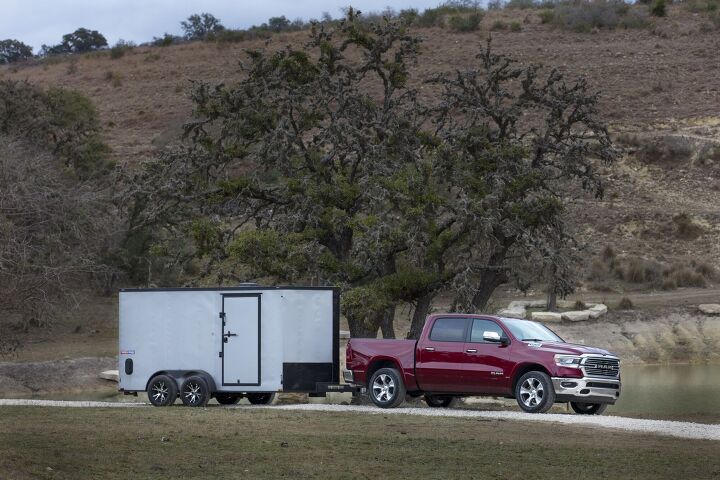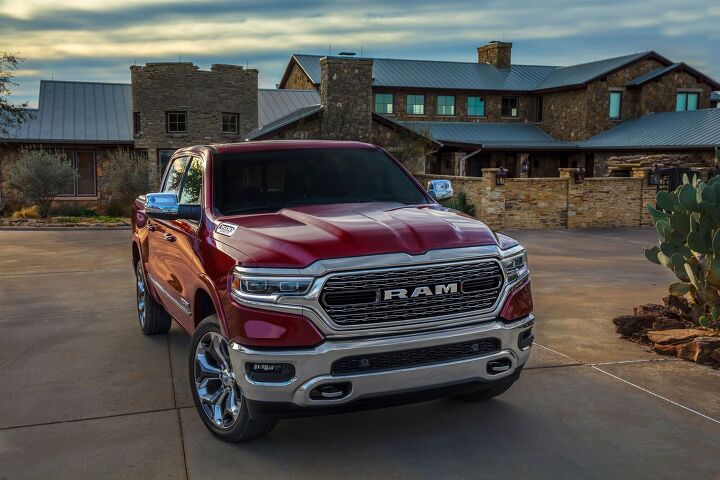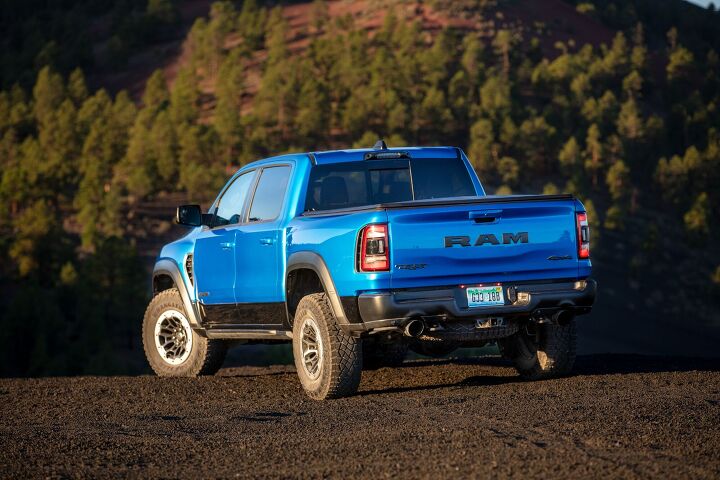Stellantis is reportedly expanding its production capabilities in Mexico to build Ram 1500 pickup trucks. While the country has been a popular destination for automakers seeking affordable labor outside the United States, while benefiting from North American trade regulations, the decision is not likely to improve the strained relationship between the automaker and the United Auto Workers (UAW).
Officially, the company has said that Ram trucks would continue to be produced at its Sterling Heights plant in Michigan. However, The Wall Street Journal recently published an article alleging that Stellantis is presently expanding its factory in Saltillo, Mexico, for the purposes of manufacturing the Ram 1500.
The facility is quite expansive and responsible for assembling engines in addition to vehicles — most notably performance units like the 8.0-liter Magnum V10 and 5.7-liter HEMI V8. But it’s likewise had a long history of building smaller motors, like the 2.4-liter Tigershark. The site was expanded in 2010, with the Saltillo South Engine factory being responsible for the 3.6-liter Pentastar V6.
These days, the area is best known for building the 6.2-liter Hellcat V8 and 3.0-liter Hurricane I6. But the broader facility also assembles Ram’s Heavy Duty pickups (e.g. 2500, 3500, 4500, and 5500) and may soon see the 1500 joining its bigger brothers on the assembly line.

Considering that the UAW has been hinting at strikes over allegations about broken promises made to retain U.S. jobs via factory commitments, the news isn’t likely to be well received by the union. However, Stellantis has reiterated that it recently promised to invest $235 million into its Michigan facility so that it can build an all-electric version of the Ram 1500.
The problem with this is that EVs haven’t been great for retaining jobs, at least when it comes to legacy brands. Sales of all-electric vehicles simply aren’t keeping pace with their combustion counterparts and have traditionally required fewer hands on the assembly line. The union presumably knows this and would rather Ram keep assembly localized to the United States.
From WSJ:
The Mexico plans come about a year after Stellantis signed a landmark labor agreement with the United Auto Workers, granting union members a substantial pay hike and promising billions in U.S.-based investment. Analysts have said the contract, which the union called the richest in its history, would increase labor costs for Stellantis and its rivals, and could compel the companies to shift some factory work outside of the country.
Stellantis has been building additional factory space next to its existing plant in Saltillo, Mexico, the people said. Satellite images reviewed by The Wall Street Journal show that two roughly half-kilometer-long buildings have been constructed in the past several months.
The plans to produce Ram pickups in the space could still change, the people said.
It couldn’t be learned whether the planned factory space in Saltillo would be used to make battery- or gas-powered versions of Ram trucks. Electric Ram trucks are set to hit dealer lots before the end of the year, among other new battery-powered offerings.
The bottom line is that it’s often cheaper to build in Mexico, especially after unionized automakers negotiated a sizable pay raise. Stellantis would frame this as remaining flexible in a time of economic and industry instability. Meanwhile, the UAW will undoubtedly categorize this as a betrayal of its contract. Union president Shawn Fain has already threatened to strike over claims that Stellantis is not moving quickly enough on its planned factory investments in the United States. The company had likewise agreed to exhaust its truck-building capacity in the U.S. before any plans were made to expand 1500 production outside the country.

Assuming the automaker stays on this trajectory, a strike seems inevitable. Things could change, however. The Wall Street Journal noted that Donald Trump has been extremely critical of automakers shifting production to Mexico, claiming it borders on abuse of regional trade regulations. He has suggested creating new restrictions and large tariffs for automakers attempting to build vehicles in Mexico with the intention of shipping them back to the U.S. for sale — should he win the 2024 presidential election.
While this was broadly seen as a way to block Chinese manufacturers who are said to be using Mexican production as a way to circumvent North American trade restrictions, the move would impact numerous legacy manufacturers who have similarly pivoted assembly lines south of the border. This includes Stellantis, which can presently attribute one-quarter of its North American products to being built in Mexico.
Kamala Harris has likewise expressed concerns about maintaining U.S. jobs. However, the Biden-Harris administration has been attempting to subsidize the industry and further restrict emissions in the hopes of encouraging a pivot to all-electric vehicles. The claim here is that technological advancement, spurred on by government investments, will create new and better jobs for American workers. This admittedly seems like it should be at odds with the union’s desires, considering what they’re going through with Stellantis right now. But UAW leadership has come out to endorse Harris for president after having previously supported Joe Biden.
Regardless of the above, Stellantis has found itself in a tricky situation. Its relationship with the union seems to be deteriorating and it’s also seen its stock valuation take a tumble since March of 2024. While its market share in Europe remains healthy enough, sales and market share has been on the decline in the U.S. Granted, this came after some healthy profits were recorded in 2023. But the company has reported multiple consecutive quarters with sales declines of 20 percent (sometimes more) inside the United States. We’ve started to see management changes, with CEO Carlos Tavares slated to retire at the start of 2026.

[Images: Stellantis]
Become a TTAC insider. Get the latest news, features, TTAC takes, and everything else that gets to the truth about cars first by subscribing to our newsletter.
Source: The Truth About Cars


